I am writing this blogpost in such a time when, forget about restaurant food, you can’t even go out of your home. It’s day-2 for the home-quarantine during the Coronavirus outburst. Now you may ask me a very simple and valid question- why am I writing on these places in this turbulent time. The answer, my friend, is quite simple. One day, someday, this too shall pass and we’ll come back stronger. Life will be happier and people will actually look forward to seeing others. And I hope people will stick to their (so-called) new-found passion for food. And then, my friend, this article on books during corona lockdown, will come in handy. And lastly, we are content writers, even if we don’t survive this state, the content on Mohamushkil will make me immortal. So, here is Poila Boisakh and food stories during crisis period
Poila Boisakh, for every Bengali in the world, is a time to rejoice. Be it in the metropolitan cities, or villages, people tend to celebrate. This is the time for the new harvest in villages, so most of the farmers have cash at their disposal. In the cities, primarily in Bengal, this is one of the prime business seasons for the business community. But this year, due to this global pandemic, everything got knocked off from the usual schedule and life does not look that cheerful anymore. A crisis is slowly settling in and we can’t deny it. So, in this blog post, we’ll try to share some of the food stories, which have evolved through a time of crisis- crisis food as we can call them.
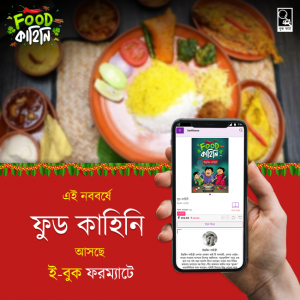
This new year, you can get the e-book version of Foodkahini via the Swiftboox app in Playstore
Story of Bengali Poila Boisakh
Bengali Poila Boisakh is based on the solar calendar, during the time for the new harvest. But, it was not the same earlier. During the Moghul empire, agricultural taxes were collected based on the Hijri calendar. But the challenge was, the Hijri calendar was based on the lunar and did not match with the harvesting schedule. And farmers had a big challenge paying the taxes out of season. And during the leadership of Emperor Akbar, Fatehullah Shirazi, a renowned scholar, and astronomer, designed the Bengali Calendar, based on the Hijri Calendar and Hindu solar calendar. The same got implemented in March 1584, but the counting there started from 1556 (Akbar’s accession to the Moghul throne). And voila, Bongabdo or Bengali New Year came into existence. But there’s another theory is there by the likes of historian Nitish Sengupta that Bangabda existed from before Akbar. I’m not sure of the actual story and prefer to believe both or either.
But what about Halkhata? The term is synonymous with the Poila Boisakh or Bengali New Year. The story goes like this. It says that “Hal” means to get the update and “Khata” stands for accounting. So, Halkhata is the time, when old accounts are settled and new accounting year is started. It was a custom to offer sweets to whoever came to clear off their debts and start the new account. And as we can see, this habit still is there.
And the crisis food
I strongly believe that every food has a story and that needs to be told. There are few commonly known food items, which were born out of tough times, during times of crisis. Can we call them Crisis food? Well, the term sounds really bad and harsh. But, maybe that’s a call we need to take in due time.
Biryani
Yes, I know, biryani for us Bengalis, is nothing less than religion. And we all love it. In fact, had things been normal, probably the most ordered food during the Poila Boisakh would have been biryani. But biryani, as we know today, was born out of famine. In 1784, during the kingdom of Nawab Ashfadullah, the entire Oudh came under a famine. And during that time, nawab started scheme as food-for-work for almost 20,000 people. The saying went like this …
Jisko na de moula
usko de Ashhfadulla …
And thus the famous Bara Imambara of Lucknow was built. And guess, what was the staple food for the workers ? No brownie points for guessing- it was Biryani. The reasons? It can be produced in bulk with minimal labor, has protein and carbs together and is damn tasty. Yes, history can be fascinating and tasty too … This information is shared kindly by my friend and heritage enthusiast Arpita Chanda
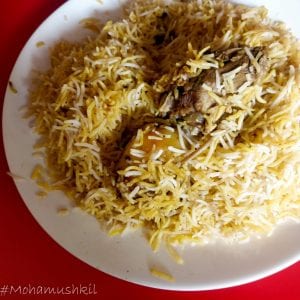
Devilled crab:
Devilled crab, technically, is a crab meat croquette. No, it’s not really the same thing that we get at the famed Mocambo restaurant here. The taste, though is one of my favorites, is not really what it should be. It originated in Florida, by the Spanish, Cuban and Italian communities. In the late 1920s, there was a huge strike in the local cigar factories and the local economy got disrupted. Blue crabs were there found aplenty and Cuban bread was readily available. And home chefs came up with a crabmeat croquette. This got widely popular after the strike was over and the famous Devilled crab was born. Please check the article on Wikipedia for the details. In the Atlantic coast region in the USA, from Georgia to the Chesapeake Bay region, a different variation is served. And we get the Chesapeake version, here in Kolkata.
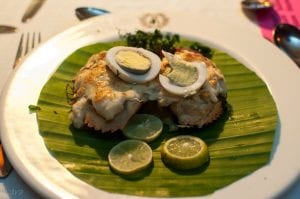
devilled crab at Mocambo
The Partition of Bengal
The partition of Bengal was announced in 1905 by Lor Curzon during the British raj. And overnight, millions of people became homeless, address-less refugees. Ideally, the Hindu dominated area was separated from the Muslim dominated area and the Radcliffe line was in existence. Naturally, for them who came from the other side of Bengal, it was a time of unimaginable hardship. Jobs were scarce, resources were extremely limited and thus food habits changed. As the food supply was less, whatever was there, the full portion was being used.
In normal times, vegetable peels were thrown away. But the excellent home cooks turned them into a special dish called Khosa Bhaja. Potato skins, lauki skins(bottle gourd) and many others were used in this way. Many say, this recipe was invented during the 2nd world war in the island of Guernsey, as the people there were left with just potatoes and seawater. Let’s not get into a debate, but we can surely say that this dish was born out of crisis time. You can check the recipe here, from which the picture is taken.
Many say, omlette er jhol was another product invented during that time. Getting individual eggs was impossible in the tight budget. And hence, eggs were beaten into omlettes with some flour pout in to make it bigger. And a curry with a piece of that omlette and potato became another household item.

Shutki Machh
Shutki mach or dried fish is considered as one of the delicacies in Bangladesh, as well as India. In Bangladesh, many areas like Chitagong, Sillet, bhola, Barishal etc are considered as the flood-prone zones. And during the monsoon season, some areas remain under-water for a long time. And as they say, necessity is the mother of invention. so, to counter this natural calamity, fish is dried and kept at home, only to be used later, in the times of despair. This information is provided by Arpita Chanda, noted heritage and history enthusiast.
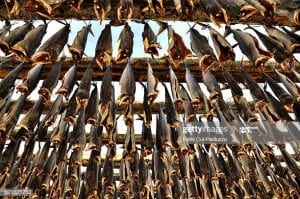
Dried fish, image taken from Getty images
Egg toast or Pain Perdu
For some strange reason, during our childhood, at home, we were served something called French toast. And, surprisingly, it was nowhere near to what I now understand by the name. So, it was sliced bread, dipped in an egg batter (of course with a generous dose of chopped onion and green chilly, shallow fried in mustard oil (of course in those black, burnt frying pans), a little love was added along with those tomato ketchup and we were happy bustards. But, as we grew up, those sliced bread transformed into thick quarter bread and breakfast made by mom transformed into the friendly neighborhood egg-sellers. I finally understood that biting into those thick quartered bread was far more enjoyable than those zero-sized rickety sliced bread- egg or no egg … But it might be interesting to know that this French Toast was the food for the needy ones and here is the story, as described by my friend, noted scholar and writer, Kaushik Majumdar.
BTW, Kaushik is coming up with his new Book on food, named Nola from the Book Farm publishers. Please check it out if you’re interested
There is nothing called as Fench toast in France. in olden days, poor people didn’t throw away their stale, old bread. They just basked it with some egg, milk and sugar syrup and shallow fried the whole thing. this dish was named Pain Perdu- Pain meaning bread and Perdu as lost. Throwing away bread was also not suggested due to religious reasons. After the great famine (1845-1851), Irish settlers came to the USA and this handy dish came along. In Britain. Till the first world war, this dish was named as the German Toast. In fact, a fourteenth Century recipe calls them as Arme Ritter (“poor knights”). And as the war continued, the British renamed it as French Toast (friends in arms). But what’s in a name, we love our Egg Toast.
Beverage in crisis times
We’ve spoken about food during the crisis period. But what about the beverages? Well, we all have loved our cup of cappuccino. But this variety of coffee was originally made for needy people. In 1520, few monks broke out of the Franciscan clan to return to the life of solitude. Now naturally the clan didn’t really like it and those monks were forced to hide from public view. They were given refuge by the Camaldolese monks and as appreciation, the fled monks began wearing the hooded cappucio cloaks. Eventually the legend says, the capucins began brewing their own frothy morning coffee from goat’s milk. Cappuccino means “Little capucin”- either for the coffee brown robes, or because of the white foamy top with its ring of brown.
This story is also shared by Kaushik Mazumdar, author of Nola
Desperate times call for desperate measures and human is known to be the best survivors. this too shall pass and I hope we’ll come back as winners. Till then, from team Mohamushkil, we wish you all a very happy 1427, suvo nababarsha and may all our dreams come true this Poila Boisakh
I can be reached at indrajit.lahiri@ymail.com

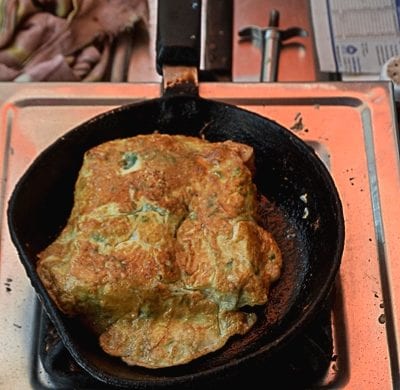
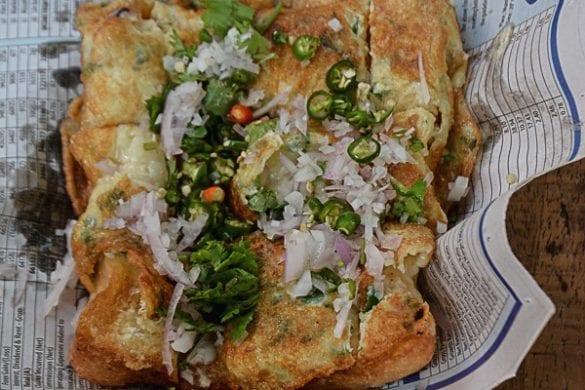
1 comment
Good to know that works too! I learn so much from you as well! Keep it up great post.